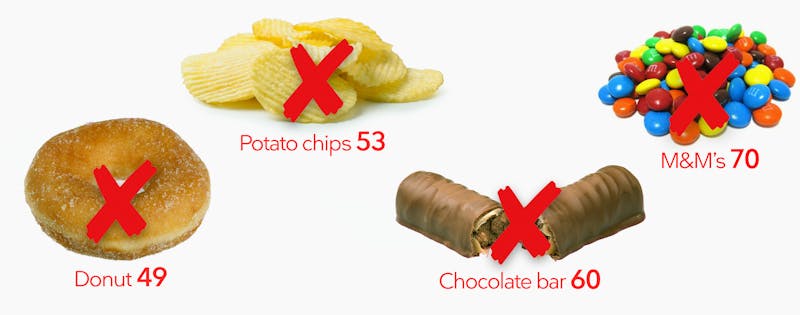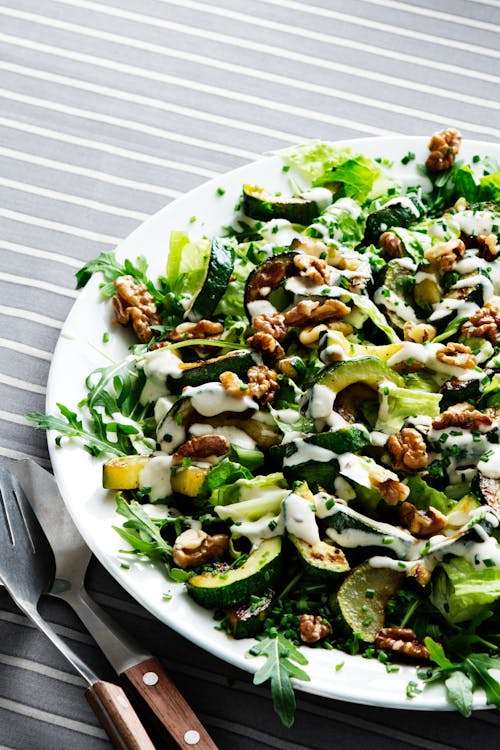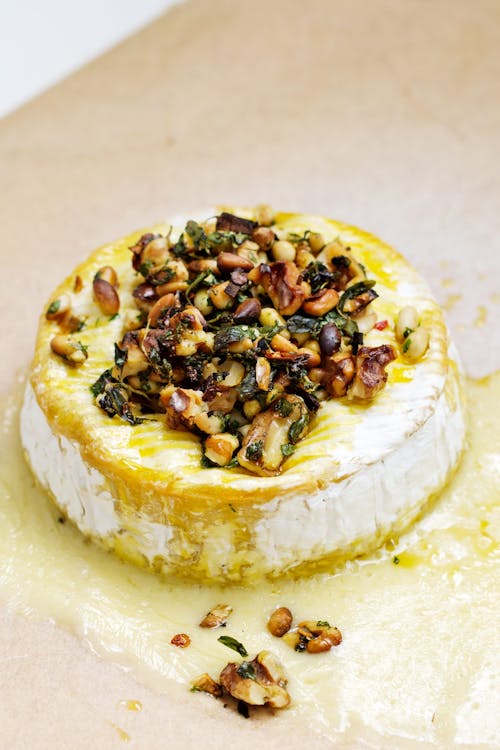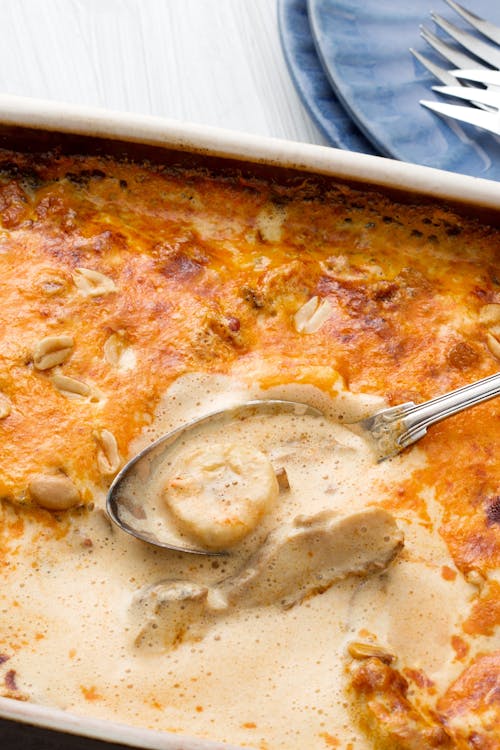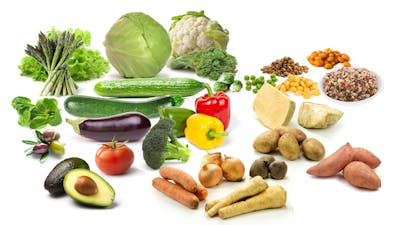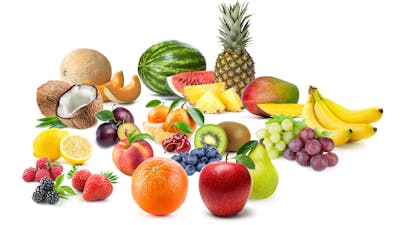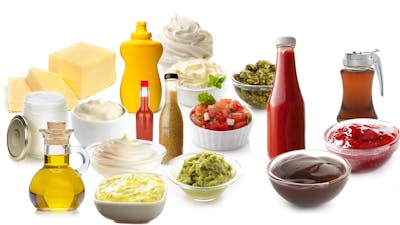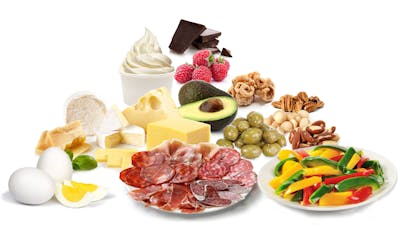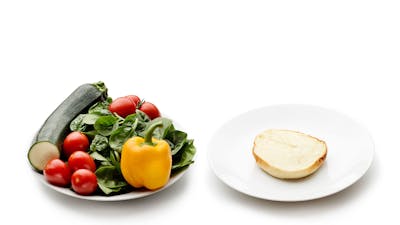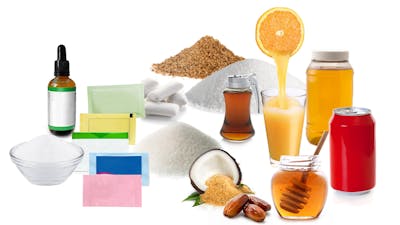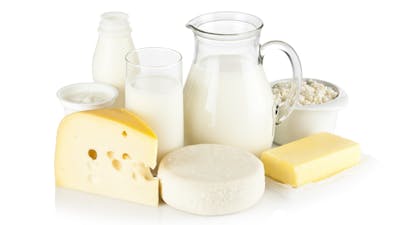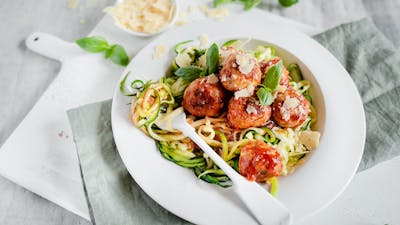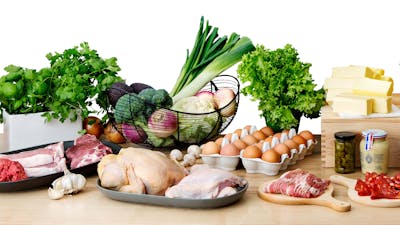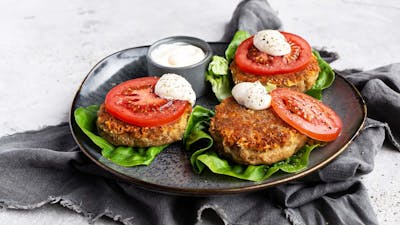Keto nuts – the best and the worst
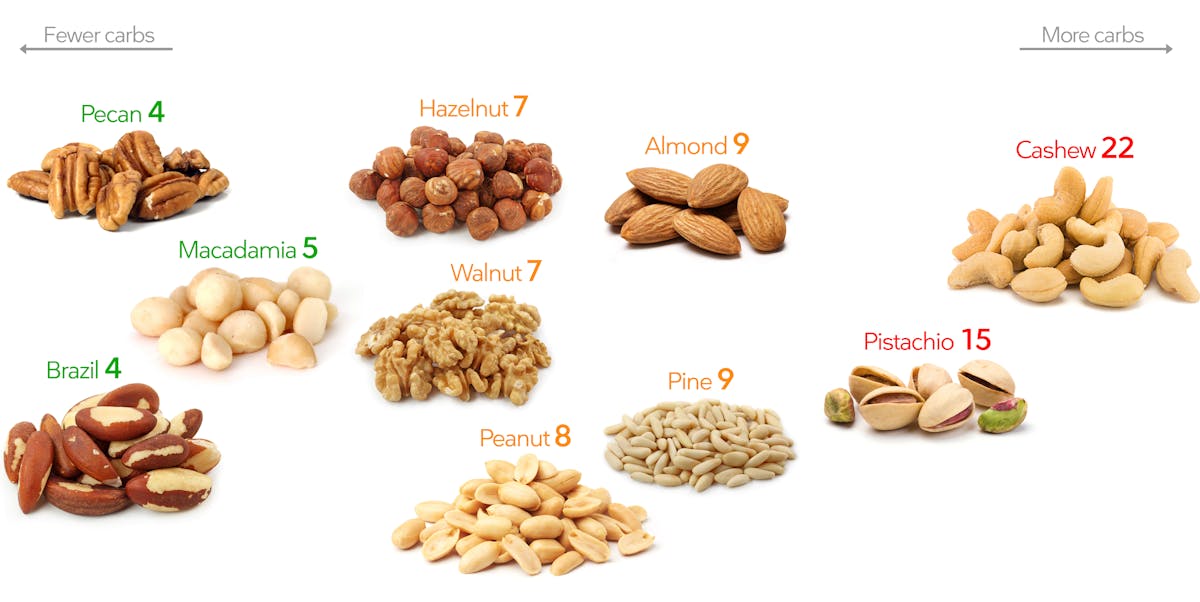
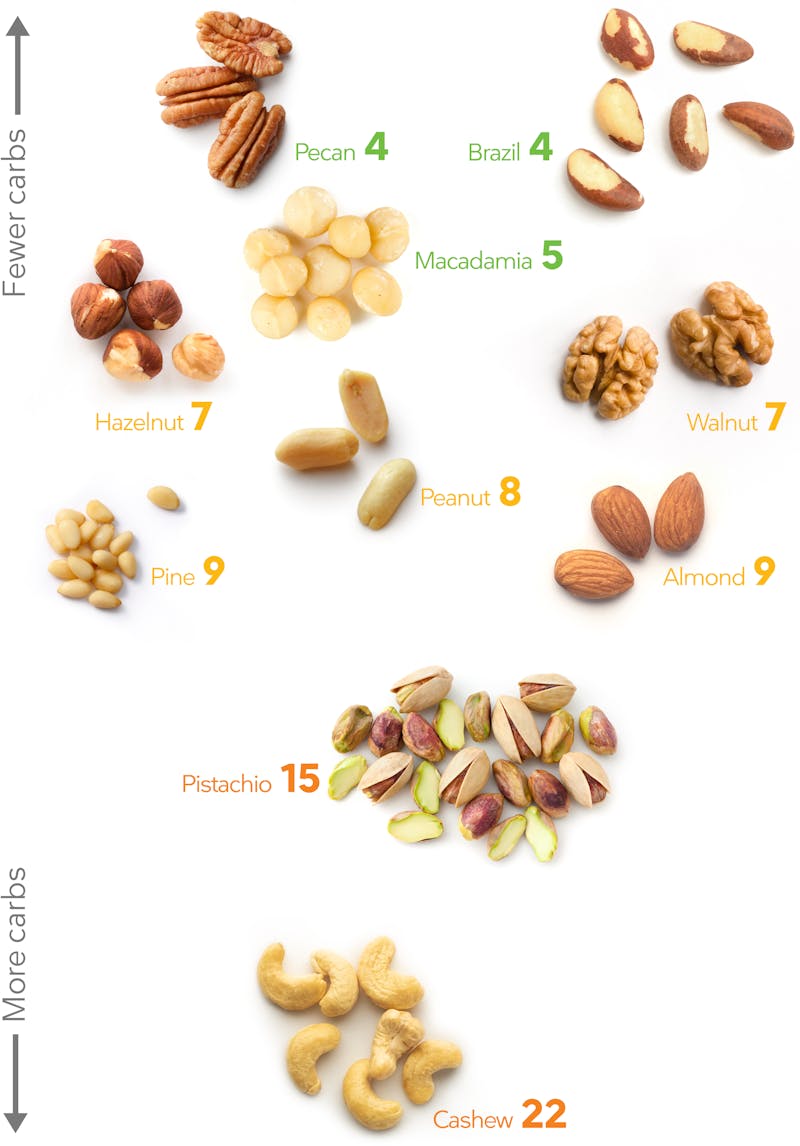
A rough guide is that 100 grams of nuts is about three handfuls — but hands come in different sizes. The lists below contain the number of net carbs, fiber, and total carbs per 100-gram (3.5-ounce) serving of different nuts.4
If you want to know exactly how many grams of carbs you’re eating, here are some more precise numbers or practical measurements of individual nuts in a 100-gram serving:
- 65 pecan halves
- 20 Brazil nuts
- 40 macadamias
- 70 hazelnuts
- 25 walnuts or 50 walnut halves
- 2/3 cup of peanuts
- 80 almonds
- 3/4 cup of pistachios
- 3/4 cup of pine nuts
- 60 cashews
Keto nuts to love
Pecans, Brazil nuts, and macadamia nuts, all on the left side of the image, have the lowest amount of carbs per serving and can be enjoyed freely on a keto diet.5
Well, almost freely. Some of us enjoy eating dry-roasted, salted nuts so much that we end up going overboard with them. If this is you, limit yourself to one handful, or simply avoid them.
Eat these low-carb nuts as a snack (if you need one) between meals, toast them and toss into salads and other dishes, or grind them into nut butters to spread on celery, other veggies, or low-carb crackers.
The nuts in the middle of the graphic are not the best keto options, but you can probably get away with a few and still remain in ketosis.
The nuts to the right – especially cashews — should be avoided on keto. You’ll very quickly reach the daily keto limit of 20-30 grams of net carbs. Less than three handfuls — about 60 cashews — is enough to reach this limit.
Avoid nuts that have been treated with sugar and other glazes, such as those labeled “honey roasted,” “sweet chili,” “salted caramel,” and “spiced.”
Whichever type of nuts you choose, read labels to make sure no sugar has been added.
A reason not to go nuts on nuts
While Brazil, macadamia, and pecan nuts are good keto options, if you are trying to lose weight, overeating any type of nut may be problematic.
Keep in mind that all nuts have a high fat content and therefore contain lots of calories. Eating them is fine if you’re hungry and need energy. But if you’re just snacking on them between meals because the nuts taste good or you feel bored, then you’re adding calories that you don’t need.
The result? Your body will burn the fat from the nuts, instead of your stored body fat — which is a problem if you want to lose weight. In this case, minimizing between-meal snacking may be the best option.6
As always, eat when you’re hungry, and don’t eat when you’re not hungry.
How to avoid eating too many nuts
Nuts are so tasty that they can be easy to overeat, especially salted varieties.7 Adding salt to nuts makes them more rewarding — and for some people, almost addictive.8 This can lead to eating far more than you need to feel satisfied.9
What’s more, eating too many nuts can seriously slow down weight loss.10
Here are some tips to help keep your nut consumption under control:
- Select the amount you want to eat.
- Put the nuts in a small bowl – don’t eat out of the full bag or container.
- Avoid mindlessly munching nuts while in front of the TV, watching a movie, reading or doing another activity that has most of your attention.11 Instead, enjoy them deliberately and mindfully.
- Cut back on nuts if you find your weight loss is stalling, and make them an occasional indulgence.
Top 7 keto nuts



Here’s our list of the top 7 keto nuts, ranked by the amount of carbs.
- Pecan nuts – 100 grams (3.5 ounces) contain 4 grams of net carbs.
- Brazil nuts – 100 grams contain 4 grams of net carbs.
- Macadamia – 100 grams contain 5 grams of net carbs.
- Walnuts – 100 grams contain 7 grams of net carbs.
- Hazel nuts – 100 grams contain 7 grams of net carbs.
- Peanuts – 100 grams contain 8 grams of net carbs.12
- Almonds – 100 grams contain 9 grams of net carbs. They can also be ground into almond flour. Their neutral flavor makes them a good substitute for high-carb flours, and almond flour can be used in many keto recipes for bread or even pizza.
Return to the top of the keto nuts guide
Recipes
Here are some popular keto recipes that use nuts.
More visual keto guides
Start your FREE 7-day trial!
Get instant access to healthy low-carb and keto meal plans, fast and easy recipes, weight loss advice from medical experts, and so much more. A healthier life starts now with your free trial!
Start FREE trial!More
Keto nuts – the best and the worst - the evidence
This guide is written by Dr. Andreas Eenfeldt, MD and was last updated on June 19, 2025. It was medically reviewed by Dr. Michael Tamber, MD on December 1, 2021.
The guide contains scientific references. You can find these in the notes throughout the text, and click the links to read the peer-reviewed scientific papers. When appropriate we include a grading of the strength of the evidence, with a link to our policy on this. Our evidence-based guides are updated at least once per year to reflect and reference the latest science on the topic.
All our evidence-based health guides are written or reviewed by medical doctors who are experts on the topic. To stay unbiased we show no ads, sell no physical products, and take no money from the industry. We're fully funded by the people, via an optional membership. Most information at Diet Doctor is free forever.
Read more about our policies and work with evidence-based guides, nutritional controversies, our editorial team, and our medical review board.
Should you find any inaccuracy in this guide, please email andreas@dietdoctor.com.
The fewer carbs you consume, the more likely it is that you will achieve and remain in ketosis.
Journal of Nutrition 2020: The ketogenic diet: evidence for optimism but high-quality research needed [overview article; ungraded]
↩
Net carbs = total carbs minus fiber ↩
To determine which numbers to use for net carb counts, we generally look in multiple nutritional databases, and when there are major discrepancies, we aim for an average of plausible numbers. Here are two examples:
Pistachios: USDA: 16.6 grams, CoFID: 8.2 grams, German database: 11.6 grams, a review on pistachios: 14.9-17.7 grams, Danish database: 17.7 grams, Canadian database: 18.7. (The USDA database may sometimes have problems with net carbs because carbs are defined as “carbohydrate by subtraction”). We conclude that 15 grams may be a good average.
Cashews: USDA: 26.9 grams, CoFID: 18.1 grams, German database 22.2 grams, a review on cashews: 20.5 grams . We take an average of these four numbers (26.9+22.2+18.1+20.5)/4=21.9, or 22 grams. ↩
Net carbs = total carbs minus fiber ↩
It is possible to get selenium toxicity by overeating Brazil nuts.
Nutrients 2015: A review of dietary selenium intake and selenium status in Europe and the Middle East[systematic review of RCTs and observational studies; moderate evidence] ↩
Eating more often than three times a day may be counterproductive for weight loss or metabolic issues:
Diabetologia 2014: Eating two larger meals a day (breakfast and lunch) is more effective than six smaller meals in a reduced-energy regimen for patients with type 2 diabetes: a randomised crossover study [moderate evidence]
PLOS One 2012: Effects of meal frequency on metabolic profiles and substrate partitioning in lean healthy males [moderate evidence]
Journal of Nutrition 2017: Meal frequency and timing are associated with changes in body mass index in Adventist Health Study 2 [weak evidence] ↩
Medical Hypotheses 2009: The Salted Food Addiction Hypothesis may explain overeating and the obesity epidemic [overview article]
↩
Current Drug Abuse Reviews 2011: The addiction potential of hyperpalatable foods [overview article]
↩
Frontiers in Psychology 2014: Food cravings, appetite, and snack-food consumption in response to a psychomotor stimulant drug: the moderating effect of “food-addiction” [overview article] ↩
According to this review, people who carry excess weight often end up eating more calories when consuming nuts:
Critical Reviews in Food Science and Nutrition 2018: Effect of nuts on energy intake, hunger, and fullness, a systematic review and meta-analysis of randomized clinical trials [strong evidence] ↩
Studies demonstrate that eating when distracted may increase food intake somewhat:
American Journal of Clinical Nutrition 2013: Eating attentively: a systematic review and meta-analysis of the effect of food intake memory and awareness on eating [strong evidence] ↩
Peanuts are technically legumes, but they’re often grouped with nuts because of their similarities. ↩
Keto nuts – the best and the worst - the evidence
This guide is written by Dr. Andreas Eenfeldt, MD and was last updated on June 19, 2025. It was medically reviewed by Dr. Michael Tamber, MD on December 1, 2021.
The guide contains scientific references. You can find these in the notes throughout the text, and click the links to read the peer-reviewed scientific papers. When appropriate we include a grading of the strength of the evidence, with a link to our policy on this. Our evidence-based guides are updated at least once per year to reflect and reference the latest science on the topic.
All our evidence-based health guides are written or reviewed by medical doctors who are experts on the topic. To stay unbiased we show no ads, sell no physical products, and take no money from the industry. We're fully funded by the people, via an optional membership. Most information at Diet Doctor is free forever.
Read more about our policies and work with evidence-based guides, nutritional controversies, our editorial team, and our medical review board.
Should you find any inaccuracy in this guide, please email andreas@dietdoctor.com.
The fewer carbs you consume, the more likely it is that you will achieve and remain in ketosis.
Journal of Nutrition 2020: The ketogenic diet: evidence for optimism but high-quality research needed [overview article; ungraded]
↩Net carbs = total carbs minus fiber ↩
To determine which numbers to use for net carb counts, we generally look in multiple nutritional databases, and when there are major discrepancies, we aim for an average of plausible numbers. Here are two examples:
Pistachios: USDA: 16.6 grams, CoFID: 8.2 grams, German database: 11.6 grams, a review on pistachios: 14.9-17.7 grams, Danish database: 17.7 grams, Canadian database: 18.7. (The USDA database may sometimes have problems with net carbs because carbs are defined as “carbohydrate by subtraction”). We conclude that 15 grams may be a good average.
Cashews: USDA: 26.9 grams, CoFID: 18.1 grams, German database 22.2 grams, a review on cashews: 20.5 grams . We take an average of these four numbers (26.9+22.2+18.1+20.5)/4=21.9, or 22 grams. ↩
Net carbs = total carbs minus fiber ↩
It is possible to get selenium toxicity by overeating Brazil nuts.
Nutrients 2015: A review of dietary selenium intake and selenium status in Europe and the Middle East[systematic review of RCTs and observational studies; moderate evidence] ↩
Eating more often than three times a day may be counterproductive for weight loss or metabolic issues:
Diabetologia 2014: Eating two larger meals a day (breakfast and lunch) is more effective than six smaller meals in a reduced-energy regimen for patients with type 2 diabetes: a randomised crossover study [moderate evidence]
PLOS One 2012: Effects of meal frequency on metabolic profiles and substrate partitioning in lean healthy males [moderate evidence]
Journal of Nutrition 2017: Meal frequency and timing are associated with changes in body mass index in Adventist Health Study 2 [weak evidence] ↩
Medical Hypotheses 2009: The Salted Food Addiction Hypothesis may explain overeating and the obesity epidemic [overview article]
↩Current Drug Abuse Reviews 2011: The addiction potential of hyperpalatable foods [overview article]
↩Frontiers in Psychology 2014: Food cravings, appetite, and snack-food consumption in response to a psychomotor stimulant drug: the moderating effect of “food-addiction” [overview article] ↩
According to this review, people who carry excess weight often end up eating more calories when consuming nuts:
Critical Reviews in Food Science and Nutrition 2018: Effect of nuts on energy intake, hunger, and fullness, a systematic review and meta-analysis of randomized clinical trials [strong evidence] ↩
Studies demonstrate that eating when distracted may increase food intake somewhat:
American Journal of Clinical Nutrition 2013: Eating attentively: a systematic review and meta-analysis of the effect of food intake memory and awareness on eating [strong evidence] ↩
Peanuts are technically legumes, but they’re often grouped with nuts because of their similarities. ↩
